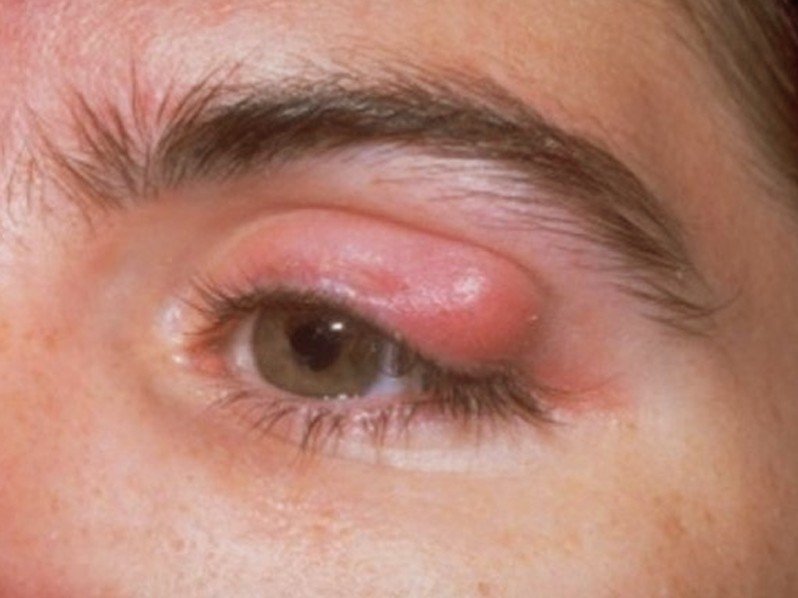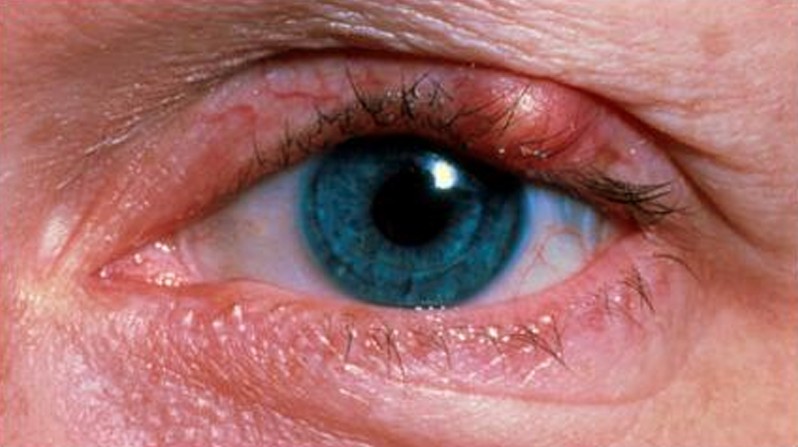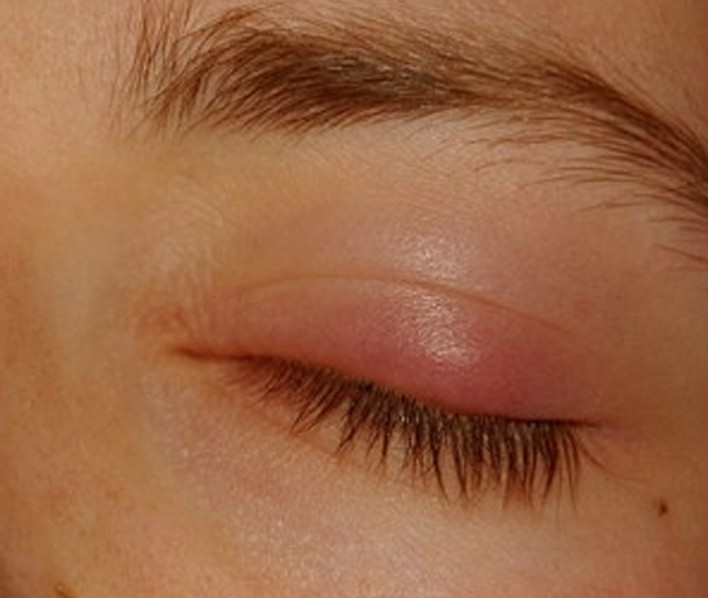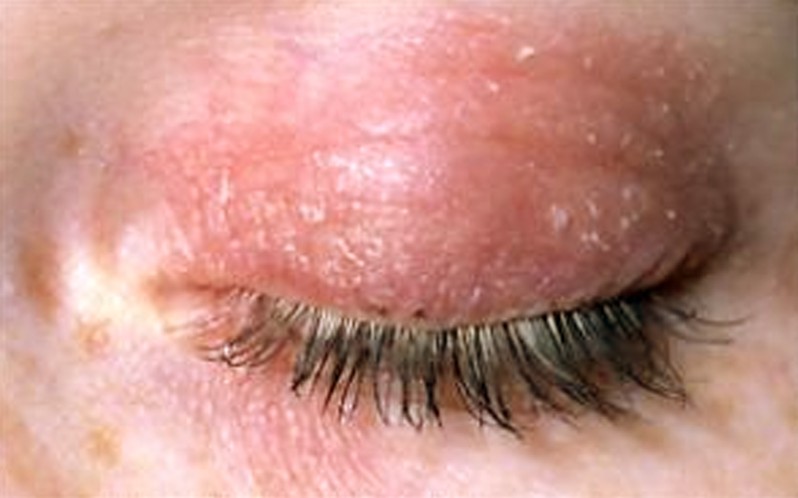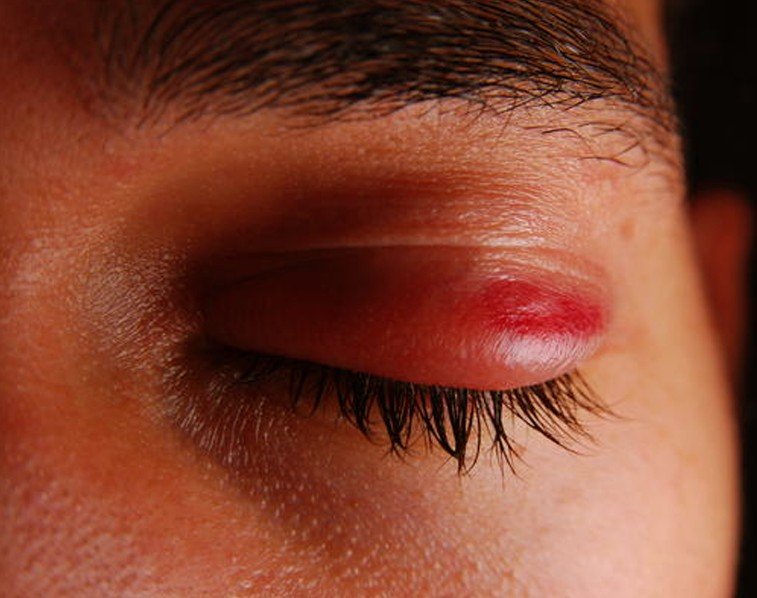Eyelid Infection
The infection of the eyelid is one of the most common eye disorders. The skin on the eyelid is very thin and it is highly susceptible for infections of any kind, associated or not with inflammation. The infection can affect the upper eyelid, the lower eyelid or both. It can range from mild to severe, requiring emergency treatment in some cases. However, before considering the treatment for the eyelid infection, one must correctly identify its cause. Once the cause has been correctly identified, there are medical treatments and home remedies that can be used in order to reduce the upsetting symptoms.
Upper Eyelid Infection
In case of infection, the upper eyelid becomes enlarged or swollen. This happens because the infection generates fluid and this has the tendency to build up, leading to swelling. It is important to understand that the upper eyelid infection can cause serious discomfort, impairing vision in a wide range of cases. If the condition is left untreated, then it will become aggravated and the symptoms will only be worse. After the infectious organism has breached the skin, it will cause upsetting symptoms and it will lead to discharge in the eye corner.
Apart from the symptoms that were already presented, the infection of the upper eyelid can also lead to a sensation of irritation experienced in the eye. This is because the eye is extremely sensitive and it will easily be influenced by the infection in the nearby area. The patient might also suffer from excessive tears, as the eye is constantly trying to eliminate the infectious pathogen. The swelling is often accompanied by redness and warmth in the area; if the infection extends to the eye, then the eye conjunctiva is going to be red as well. Most often, the infection is associated with the inflammation of the eyelid glands.
Lower Eyelid Infection
If the lower eyelid is infected, then it will become enlarged or swollen as the upper one. The buildup of fluid is going to be present in the area below the eyelid and the swelling can range from mild to severe. The vision impairment is also possible in the infection of the lower eyelid. This infection can lead to eye discharge, it can contribute to the eyelid becoming dry and it can cause a lot of pain, especially if the infection is more severe. Sometimes, the obstruction of the eyelid glands can lead to the appearance of a lump on the lower eyelid. This is known as a stye. It can affect either of the eyelids, being accompanied by a wide range of symptoms. Apart from the actual inflammation, the area is going to be red, warm and tender (if not painful) to the touch.
The infection of the lower eyelid can cause the eye conjunctiva to be irritated and the whole area to be red and warm. Excessive tears are going to be produced as well and the patient will declare he/she feels as though he/she had sand in the eyes. The inflammation that is generated by the infection can cause discomfort and general irritation. It is important to determine the correct cause that has led to the infection of the lower eyelid, as the wrong treatment can aggravate the infection.
Causes of Eyelid Infection
These are the possible causes that can lead to the infection of the eyelids:
- Bacteria/viruses
- Bacterial infection of meibomian glands – styes
- Preseptal cellulitis – affects the eyelids and the area around the eye, but does not extend into the eye socket.
- Orbital cellulitis – serious infection around the eye, potentially life-threatening
- Blepharitis – inflammation of the eyelid edge, near the eyelashes (most often, bacterial)
- Conjunctivitis – the infectious organism can easily be transmitted from the eye conjunctiva to the eyelid, causing swelling and other symptoms.
- Using cosmetic products past their expiration date or of low quality
- Trauma to the eyelid – if proper hygiene measures are not taken, then the risk of infection is even higher
- Eye contusion (black eye)
- Cosmetic surgery to the eyelids (lifts)
- Blockage of the eye glands
- Insect bites can initially cause inflammation but they can also cause infection, especially if not proper care is taken of the bite zone
Treatment
These are the most common methods of treatment recommended for eyelid infection:
Antibiotics
- Topical applications – ophthalmic ointment containing erythromycin is recommended in case of serious styes (often combined with oral administration of the same antibiotic, as topically is not so well absorbed). Antibiotic drops can also be used in case the infection has spread from the eyelid to the eye conjunctiva.
- Oral administration – recommended for more serious infections, associated with systemic symptoms. Oral antibiotics include Cephalexin, Dicloxacillin, Clindamycin, and Augmentin.
- Intravenous antibiotics are indicated in cases of orbital cellulitis, as this kind of infection is quite severe. Also, intravenous antibiotics often represent the first course of treatment in children (as these have a pretty weak immune system).
Antifungal topical cream
Recommended for fungal infections, eliminating the fungi and preventing them from growing as well.
Anti-inflammatory medication
Recommended to relieve the pain commonly associated with the infection of the eyelids
Surgery
- Can be used in styes – incision and drainage will contribute to a faster healing of the infection.
- Recommended in case of orbital cellulitis, for:
- Orbit decompression
- Abscess drainage
- Infected sinus opening.
Remedies
These are the most common home remedies you can apply for eyelid infection:
- Cold compress over the eyes
- Ice packs can also be applied – apply them using a cloth (direct application can cause circulatory problems) and do not maintain them on the eyes for prolonged periods of time
- Warm compresses are recommended only after the inflammation has subsided, as they can help with the pain
- The debris that accumulates on the eyelids should be cleaned with the aid of a cotton stick
- The affected eyelid can be kept free of crusts by using a mild soap or baby shampoo. The eyes should be kept closed during the cleaning process, so as to avoid further irritation.
Eyelid Infection Pictures
Collection of photos, images and pictures of Eyelid infection…
